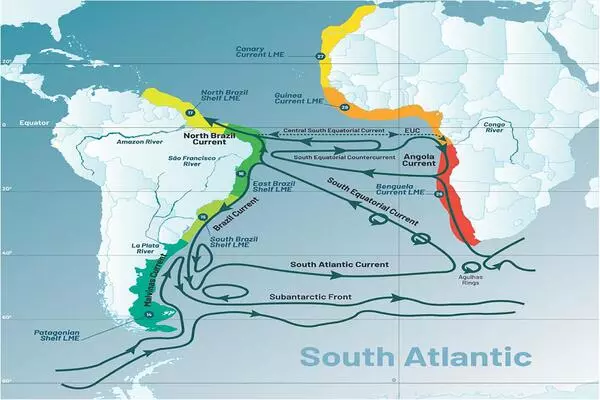Winter rain and snow in the western Himalayas could vary by nearly 50% due to North Atlantic atmospheric conditions. The amount of winter rain and snow in the western Himalayas can vary by nearly 50% depending on the air pressure gradient over the Atlantic Ocean between the Azores and Iceland, according to a study led by the University of Reading.
Scientists have spent decades attempting to determine the origins of the link between the two regions. This new study adds to the body of evidence that could lead to more accurate forecasting of winter precipitation levels in India months in advance. The findings could be used to boost crop yields of important crops like wheat and barley, as well as to help manage the country’s vital water supplies.
“Despite being several thousand miles apart, we have known that pressure patterns over the North Atlantic have some influence over winter weather in the western Himalayas,” said Dr Kieran Hunt, a research scientist in tropical meteorology at the University of Reading and the study’s lead author. However, scientists have spent years trying to figure out what that link is and how strong it is.
Climate change may also have a hand in the amount of winter rain and snow seen in north-west India in future, as the shape and position of the North Atlantic jet stream and the strength of the subtropical jet are expected to be affected as the planet warms. This has potential implications for the jet stream that fuels storms in India.
Kieran Hunt
“The link we have found could be incredibly useful for states and rural communities in north-west India that rely on winter rain and snow for supplies of food and water. Advance notice of any shift towards wetter or drier weather from observing the North Atlantic could be a lifeline in preparing for water shortages, or even flooding.”
The new research, published in Climate Dynamics, focused on the correlation between the fluctuating phases of the North Atlantic Oscillation (NAO) and winter rain and snow in the western Himalayan region.
During a positive NAO phase, the strong contrast between high pressure over the Azores and low pressure over Iceland forces the North Atlantic jet stream northward, causing more instability in the subtropical jet stream that runs over Africa and towards India.
Storms are carried to northwestern India by additional disturbances in the subtropical jet. Winter storms in the region were 20% more frequent and 7% more intense during a positive NAO phase than during a negative phase, according to the study. In areas where winter storms are already common, this increased to 31% more frequent storms.

This resulted in 40% more moisture being carried along the subtropical jet on average, and therefore 45% more rain and snow in the western Himalayas in winter months during a positive NAO phase.
The increase in storms in north-west India is likely to affect states such as Jammu and Kasmir, Punjab, Gujarat and southern Pakistan. These are mostly rural areas but do contain cities such as Srinagar, Peshawar, Jodhpur, Hyderabad and Karachi.
The study used 70 years of data from the Reading-based European Centre for Medium-range Weather Forecasts and other organisations, as well as rainfall gauge data from the western Himalayan region provided by the Indian Meteorological Department.
The authors found the correlation was strongest within the 2-3 and 12-16 year cycles in NAO variation. The slow variations in NAO offers scope for improving the forecasting of wetter or drier-than-average north-west Indian winter weather up to three months in advance.
In addition to assisting crops grown during the winter, snow that falls on the Himalayas melts and feeds rivers during the spring, making this critical to India’s water security. More research is needed to determine why the speed at which the NAO affects Western Himalayan rainfall varies from zero to six months, and whether there is any impact on the winter monsoon in southern India and Sri Lanka.
Dr Hunt said: “Climate change may also have a hand in the amount of winter rain and snow seen in north-west India in future, as the shape and position of the North Atlantic jet stream and the strength of the subtropical jet are expected to be affected as the planet warms. This has potential implications for the jet stream that fuels storms in India.”
















